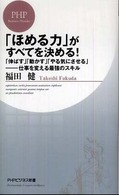Full Description
Sarcopenia: Molecular, Cellular, and Nutritional Aspects describes the progressive loss of skeletal muscle mass and strength, defined by Rosenberg in 1997 as a hallmark of aging and referred to as "sarcopenia". As life expectancy continues to increase worldwide, sarcopenia has become a major public health issue. The condition worsens in the presence of chronic diseases that accelerate its progression. Sarcopenia is not considered to be "a process of normative aging" but according to the International Classification of Disease, Tenth Revision, Clinical Modification (ICD-10-CM), as a disease. As sarcopenia is an unavoidable process, prevention and management are the only options to promote healthy aging, actions that should perhaps should perhaps be taken during youth.
Included in this book:
· Features essential information on sarcopenia, its current definition, and molecular and cellular aspects of this disease
· Discusses the development of physical frailty, a complication of sarcopenia, and predicts its occurrence in the older population
· Presents alterations in muscle protein turnover and mitochondrial dysfunction in the aging process
· Provides data on the negative involvement of sarcopenia in certain chronic diseases that can lead to cachexia, a metabolic wasting syndrome
· Describes presbyphagia or age-related changes in the swallowing mechanism in older people
· Details possible strategies to combat muscle wasting in healthy older adults and their limitations
This book features information collected from pioneers or experts on human aging from around the globe, including Europe, Brazil, Canada, Japan and the United States. It is a valuable source of information for nutritional scientists, medical doctors, sports scientists, food scientists, dietitians, students in these fields, and for anyone interested in nutrition. We hope this book provides a better understanding of sarcopenia which inevitably occurs with aging without weight loss. The book also provides information outlining strategies to prevent or limit muscle wasting due to normal aging in order to promote successful aging.
Contents
Basics of Sarcopenia: Definition and Challenges of Sarcopenia Research. Definitions of Sarcopenia. New Data on Sarcopenia. Models of Accelerated Sarcopenia. Sarcopenia in Physical Frailty. Molecular and Cellular Aspects of Sarcopenia. The Role of Imaging Techniques in the Diagnosis of Sarcopenia. Nutrient Sensing and mTORC1 Regulation in Sarcopenia. Different Adaptation of Ubiquitin-Proteasome and Lysosome-Autophagy. Signaling in Sarcopenic Muscle. Myokines in Aging Muscle. The Contribution of Satellite Cells to Skeletal Muscle Aging. Muscle Stem Cell Microenvironment in Sarcopenia. Sarcopenia and Oxidative Stress: From the Bench to Therapeutic Strategies. Alterations in Muscle Protein Turnover in the Aging Process. Muscle Protein Turnover and Sarcopenia in the Elderly: The Effects of Nutrition. The Relationship between Muscle Mitochondrial Turnover and Sarcopenia. Skeletal Muscle Fat Infiltration with Aging: An Important Factor of Sarcopenia. Recent Advances Limiting Sarcopenia and Supporting Healthy Aging. Nutritional Modulation of Mitochondria-Associated Death Signaling in Sarcopenia. Beneficial Effects and Limitations of Strategies (Nutritional or Other) to Limit Muscle Wasting due to Normal Aging. Applications. Muscle Impairments or Diseases Due to the Frailty Induced by Sarcopenia. Declines in Whole Muscle Function with Aging: The Role of Age-Related Alterations in Contractile Properties of Single Skeletal Muscle Fibers. Sarcopenic Dysphagia, Presbyphagia, and Rehabilitation Nutrition. Complications due to Sarcopenia in Acute or Chronic Diseases. Wasting and Cachexia in Chronic Kidney Disease. Sarcopenia and Parkinson's Disease: Molecular Mechanisms and Clinical Management. Sarcopenic Obesity in the Elderly. Sum Up and Future Research.








